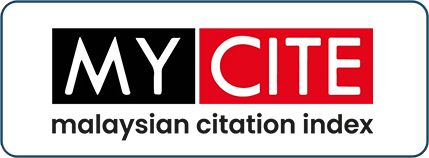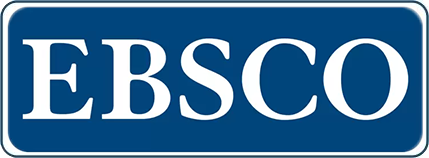Nanotechnology within Halal Legal Framework: Case Study of Nano-Based Food Products
DOI:
https://doi.org/10.33102/jfatwa.vol17no1.3Keywords:
nanotechnology, food, Halal, regulationAbstract
‘Halal’ is currently being pursued in many consumer products, including those that containing nanomaterials or regular materials manipulated at nano-scale level. As the governor of Halal affairs in Malaysia, the Department of Islamic Development Malaysia (JAKIM) is responsible to ensure regulatory approval for nano-based products must be consistent with the Halal parameter set out under Syariah law. Despite Halal certification in this area also remains low in Malaysia, there is a need to investigate the approach to regulating nanotechnology products in order to see if protection of consumers is guaranteed; and whether Halal and safety mechanisms for consumer products are vigilant enough. In realising these aims, this paper takes nano-based food products as a case study. Through analysis, this paper provides an original perspective of how can the existing Halal legal framework adequately covers nanotechnology products. It will involve, firstly, the discussions of the Trade Description Act 2011 or TDA 2011 (as well as the Trade Description (Definition of Halal) Order 2011 and the Trade Description (Certification and Marking of Halal) Order 2011) and legislations governing the two specific sectors. Secondly, it examines whether the existing Halal legal framework is capable of dealing with more complex and sophisticated technology-based products like foods that contain nanomaterials or using nanotechnology. In setting out the parameter of whether the existing regulation is adequate to protect consumers, it highlights legal and regulatory issues relevant to safety regulation of nano-enabled food and cosmetic products. The paper finds that the current Halal legal framework has covered all consumer goods and products, including nano-based products. Indeed, the products are also subject to specific Halal monitoring and enforcement similar to other Halal approved products. This is also in tandem with the concept of Halal Thoyyiban that permits any goods for consumption as long as they are safe and do not cause harm. However, within this it should not be forgotten that such products/technology remain the subject of considerable research as this technology is relatively nascent and the safety/ risk threshold has not been fully ascertained.
Downloads
References
Abdul Majid, M.A, Zainal Abidin I.H, Abd Majid H.A & Tamby Chik C. (2015) Issues of Halal Food Implementation in Malaysia, J. Appl. Environ. Biol. Sci., 5(6S) 50-56.
Aitken R.J, Creely K.S. & Tran CL. (2004) Nanoparticles: An Occupation Hygiene Review. Edinburgh: Institute of Occupational Medicine for the Health and Safety Executive, 7-9.
Awang, M.N. (2014) Exploring Safety Measures for Nanofood within International Systems. PhD thesis (unpublished), London: Brunel University.
“Badan Pengeluar Sijil Pengesahan Halal di Malaysia” (February 2012) Booklet Inisiatif dan Impak Perlaksanaan FGPPH, 3.
Bawa, R., (2013) FDA and Nanotech: Baby Steps Lead to Regulatory Uncertainty.” Bio-Nanotechnology: A Revolution in Food, Biomedical and Health Sciences. 1st ed. Eds. Debasis Bagchi, Manashi Bagchi, Hiroyoshi Moriyama, and Fereidoon Shahidi. New York: John Wiley & Sons.
Cullen v. Mc Nair (1908) 99 L.T. 358.
Department of Islamic Development Malaysia (2011). Retrieved 28 October 2014 from http://www.islam.gov.my/en/majlis-penyerahan-kad-kuasa-pelantikan-penolong-pengawal-perihal-dagangan-kepada-pegawai-jakim-di-ba.
Department of Islamic Development Malaysia (2005). Retrieved from http://www.islam.gov.my/en/jakim-terima-137-perjawatan-baru-perkuat-bahagian-hub-Halal on 26 October 2014.
Department of Standards Malaysia (2009) MS1500:2009 Halal Food – Production, Preparation, Handling and Storage – General Guidelines.
Economic Planning Unit. Science and Technology. (2006) Eighth Malaysian Plan: 2006-2010. Putrajaya: Prime Minister’s Department.
Economic Planning Unit. (2006) Performance and Challenges of Industrial Development. Third Industry Master Plan: 2006-2020, para 1.63. Putrajaya: Prime Minister’s Department.
European Parliament, Committee on the Environment, Public Health and Food Safety (2008), Report on Regulatory Aspects of Nanomaterials (2008/2208(INI)) A6-0255/2009. Retrieved from <http://eur-lex.europa.eu/LexUriServ/LexUriServ.do?uri=COM:2008:0366: FIN:en:PDF> on 20 June 2013.
European Parliament (2008) Committee on the Environment, Public Health and Food Safety, (2008) Report on Regulatory Aspects of Nanomaterials (2008/2208(INI)) A6-0255/2009. p.9. Retrieved from <http://eur-lex.europa.eu/LexUriServ/LexUriServ.do?uri=COM:2008:0366:FIN: en:PDF> on 13 June 2015.
Feitshans I.L. (2013) Nanotechnology: Balancing Benefits and Risks to Public Health and the Environment. Council of Europe. 3(2013): 1-16. Retrieved from http://www.assembly.coe.int/ CommitteeDocs/2013/Asocdocinf03_2013.pdf on June 2015.
Fender, J.K. (2008) The FDA and Nano: Big Problems with Tiny Technology. Chicago-Kent Law Review. 83:2, 1075-76.
Forbes, I. (2006) States of uncertainty: governing the empire of biotechnology, New Genetics and Society 25(1) 69-88.
Friends of the Earth (2006) Nanomaterials: Sunscreen and Cosmetics: Small Ingredients, Big Risks.
Hamdan, H. (2014) NanoMalaysia Programme (2011–2020): Engine of Growth for Innovative Malaysia. Journal of Experimental Nanoscience 9.1, 6.
Hamdan, H. (2007) Nanotechnology in Malaysia : a new paradigm. Proceedings SIMPOMIN 2007 (Mineral Symposium 2007), 4-6 September 2007, Orient Star Resort, Lumut, Perak.
Hashim U., Nadia, E. and Salleh, S. (2009) Nanotechnology development status in Malaysia: industrialization strategy and practices. International Journal of Nanoelectronics and Materials 2(2009) 119-134.
FAO/WHO (2013) State of the art on the initiatives and activities relevant to risk assessment and risk management of nanotechnologies in the food and agricultural sectors. Rome: FAO/WHO.
Lux Reseacrh Inc. (2005) Nanotechnology: where does the US stand?. Testimony before the Research Subcommittee of the House Committee on Science. New York: Lux Research Inc.
Nanotechnology Research and Development Act 20 (Public Law 108-153), Passed in 108th Congress (First session). Retrieved from <http://www.nanotech-now.com/S189.pdf> 15 July 2013.
Ministry of Science, Technology and Innovation (2010). National Nanotechnology Statement. Retrieved from <http://aspheramedia.com/v2/wp-content/uploads/ 2011/03/nanostatement20101.pdf> on 23 June 2014.
Mohd. Othman, N. (2007) Food Safety in Southeast Asia: Challenges Facing the Region. Asian Journal of Agriculture and Development. 4.2 (2007): 83-92.
National Nanotechnology Initiative (NNI) (2001) Nanotech Facts: What is nanotechnology? Washington, DC: NNI.
NanoMalaysia Berhad, Background, Retrieved from <http://www.nanomalaysia.com.my/?p=about&c=background> on 23 March 2014.
NanoMalaysia Berhad. ‘Jumpstart Sectors of Nanotechnology”. Retrieved from <http://www.nanomalaysia.com.my/?p=about&c=background> on 23 March 2014.
National Nanotechnology Directorate (February 2014) Nanotechnology – The Malaysian Landscape, National Nanotechnology Strategic Direction and Roadmap. (restricted access - on file with author).
Othman, P., Sungkar, I., & Hussin, W. S. W. (2009). Malaysia as an international Halal food hub: Competitiveness and potential of meat-based industries. ASEAN Economic Bulletin, 26(3), 306-320.
Lövestam, G. et al. (2010) Considerations on a Definition of Nanomaterial for Regulatory Purposes. Reference Report. Rome: The Joint Research Centre, European Commission.
Lux Reseacrh Inc. (2005) Nanotechnology: where does the US stand?. Testimony before the Research Subcommittee of the House Committee on Science. New York: Lux Research Inc.
Project on Emerging Nanotechnologies (2014) Consumer Product Inventory. Retrieved from <http://www.nanotechproject.org/cpi/browse/countries/malaysia/> on 27 November 2015.
Royal Society and The Royal Academy of Engineering (2004) Nanoscience and Nanotechnologies: Opportunities and Uncertainties. London: Royal Society and The Royal Academy of Engineering.
Sahu, C.S., and Casciano, D.A. (2009) Nanotoxicity: From In-Vivo and In-Vitro Model to Health Risks. John Wiley and Son Inc.
Zewail, A. (2009) Science and Technology in the Twenty First Century. Akademi Sains Malaysia Lecture Series. Kuala Lumpur: ASM.
Downloads
Published
Issue
Section
License
The copyright of this article will be vested to author(s) and granted the journal right of first publication with the work simultaneously licensed under the Creative Commons Attribution 4.0 International (CC BY 4.0) license, unless otherwise stated.















